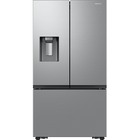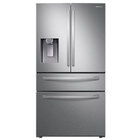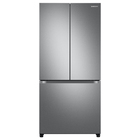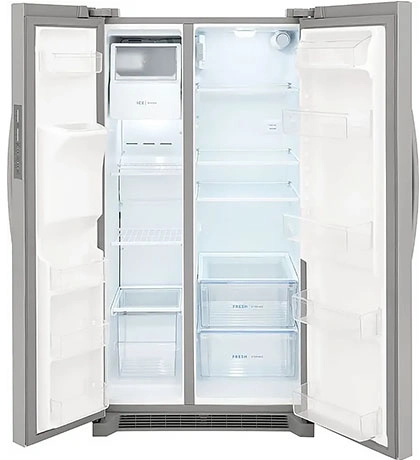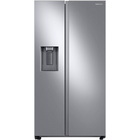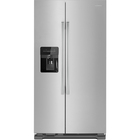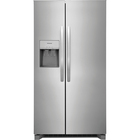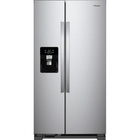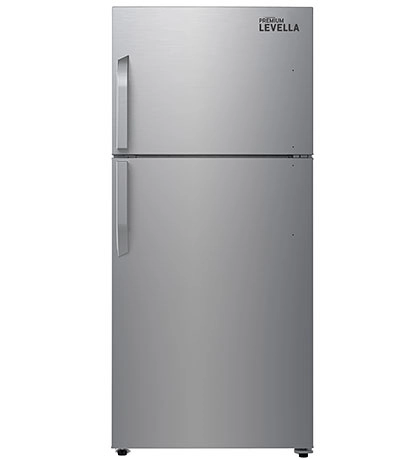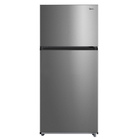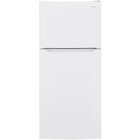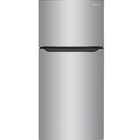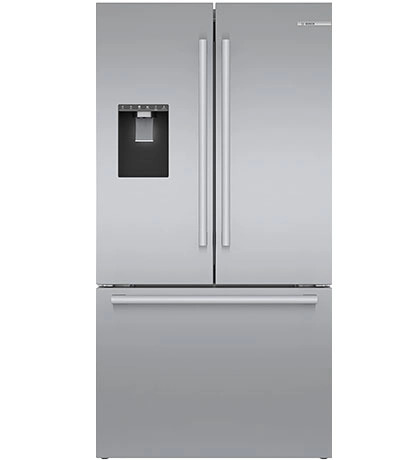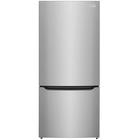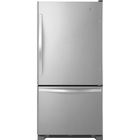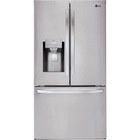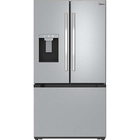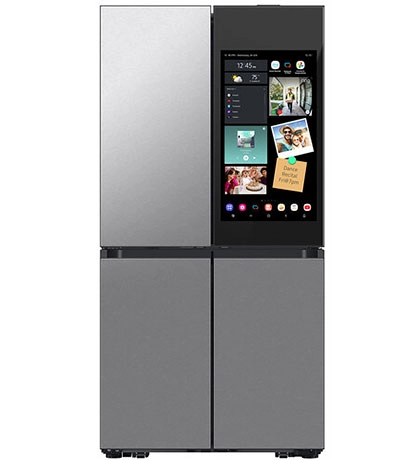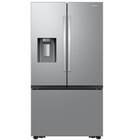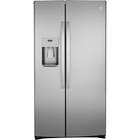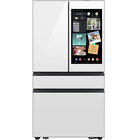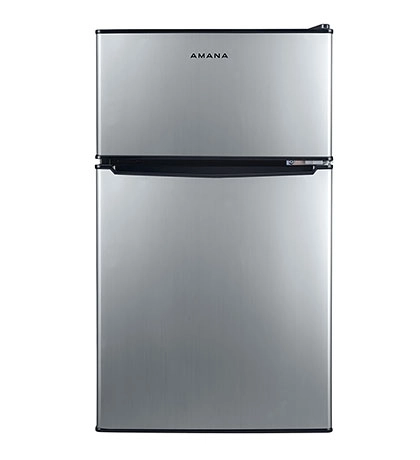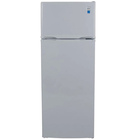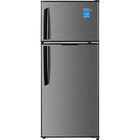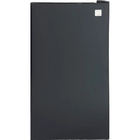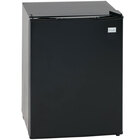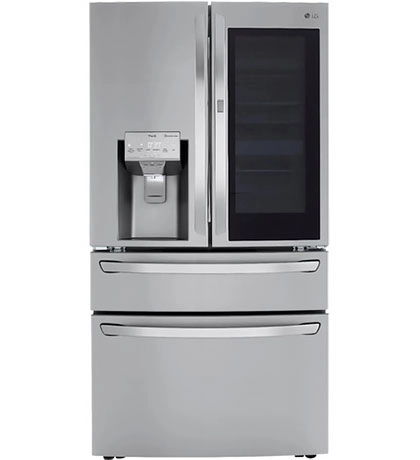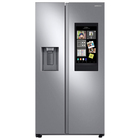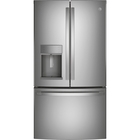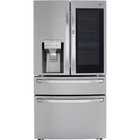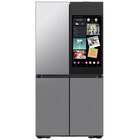
Refrigerator Buying Guide
Finding the Right Refrigerator for Your Needs
Confused by all the refrigerator options out there? You're not alone. Between French doors, side-by-sides, smart features, and endless size options, choosing the right fridge can feel overwhelming.
Here's the thing: the right refrigerator can save you money on energy bills, reduce food waste, and make your daily routine smoother. Pick the wrong one? You'll deal with cramped shelves, high electric bills, and daily storage frustrations.
We'll break down everything from size and style to features that actually matter, so you can make the right choice for your kitchen, budget, and lifestyle.
Choosing the Right Size
Here's a simple rule of thumb that actually works:



Measuring Your Space
This is where a lot of people mess up, so let's get it right the first time.
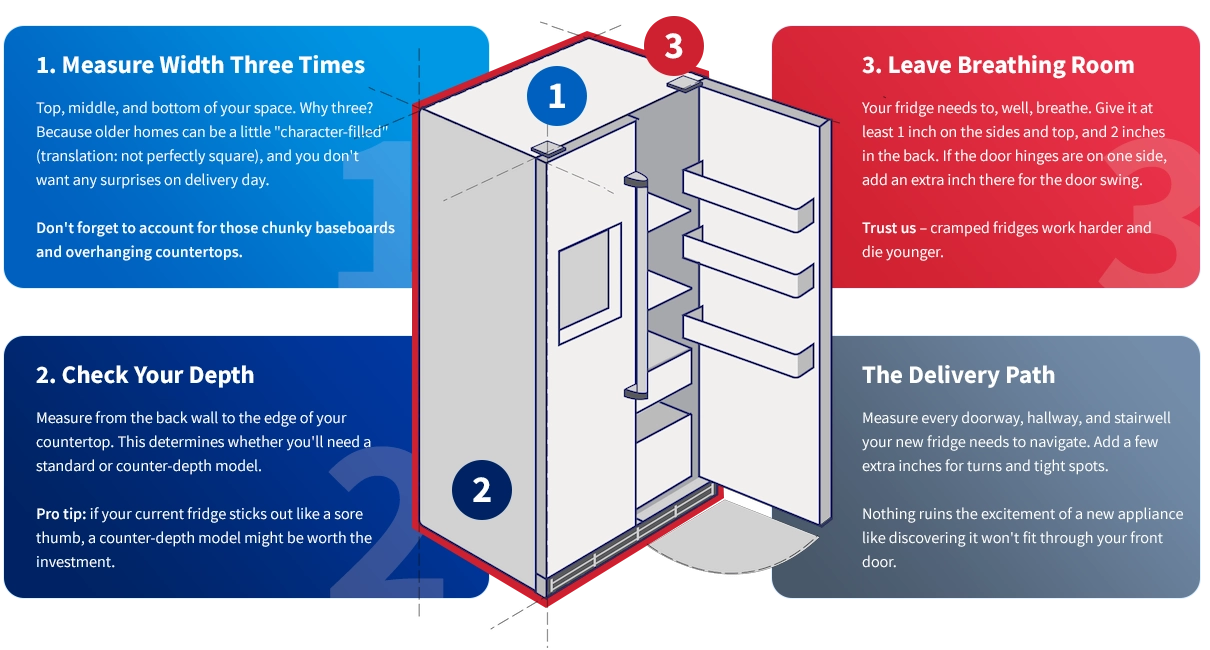
Measure width three times: Top, middle, and bottom of your space. Why three? Because older homes can be a little "character-filled" (translation: not perfectly square), and you don't want any surprises on delivery day. Don't forget to account for those chunky baseboards and overhanging countertops.
Check your depth: Measure from the back wall to the edge of your countertop. This determines whether you'll need a standard or counter-depth model. Pro tip: if your current fridge sticks out like a sore thumb, a counter-depth model might be worth the investment.
Leave breathing room: Your fridge needs to, well, breathe. Give it at least 1 inch on the sides and top, and 2 inches in the back. If the door hinges are on one side, add an extra inch there for the door swing. Trust us – cramped fridges work harder and die younger.
The delivery path: Measure every doorway, hallway, and stairwell your new fridge needs to navigate. Add a few extra inches for turns and tight spots. Nothing ruins the excitement of a new appliance like discovering it won't fit through your front door.
Think of French door refrigerators as the luxury SUV of the fridge world. Those elegant double doors on top open wide to reveal spacious shelves perfect for everything from party platters to your weekly farmers market haul. Below, a deep freezer drawer slides out like a filing cabinet, keeping your frozen goods organized and accessible.
The beauty is in the design. You'll have fresh food right at eye level, so no more digging around for that container of leftover pasta. Plus, when you only open one door, you're not letting all the cold air escape, which your electric bill will appreciate.
- 4-door French door refrigerator: Adds an extra drawer in the middle. Perfect if you need separate zones for different types of food.
- Door-in-door French door refrigerator: Features a smaller door within the main door for quick access to frequently used items without opening the whole compartment.
- Small French door refrigerator: Ideal for apartments or smaller kitchens where you want the style but don't need massive capacity.
- Built-in French door refrigerator: Designed to sit flush with your cabinetry for that custom kitchen look.
- French door with bottom freezer: The classic French door layout that puts fresh food at eye level and frozen items in a convenient pull-out drawer below.
Most French door refrigerators run 29 to 36 inches wide, with 30-inch models being especially popular for standard kitchen layouts. A typical 22 cu. ft. French door fridge hits that sweet spot for most families without overwhelming smaller kitchens.
- Stainless steel The classic choice that works with any kitchen style
- Black stainless: Modern and sophisticated, shows fewer fingerprints
- White: Clean, timeless, and surprisingly trendy again
What you'll love: The generous storage space adapts to everything from party platters to tall wine bottles. Fresh food sits right at eye level, so you won't be digging around for your morning yogurt. The wide shelves handle those awkward-shaped leftovers that never seem to fit anywhere else. And let's be honest – they just look impressive.
What might frustrate you: The freezer drawer can become a black hole where bags of frozen peas go to hide. You'll pay more upfront compared to simpler designs. And if your kitchen is tight on space, those wide doors need room to swing open properly.
If you cook frequently, entertain often, or just want your fresh food easily accessible, French doors make daily life easier. The split-door design keeps cold air from escaping when you're just grabbing the milk, and the wide refrigerator compartment handles large items that would never fit in a side-by-side.
French doors give you those wide shelves and a more upscale look, while side-by-sides cost less and work better in narrow kitchens. It really comes down to how you use your fridge and what your kitchen can accommodate.
Most standard doorways are 32-36 inches wide, and many French door fridges are designed with this in mind. But always measure your delivery path first. It's much easier to exchange a model before delivery than after.
Many newer models are ENERGY STAR® certified, and that split-door design does help minimize cold air loss. You'll typically see lower energy bills compared to older, less efficient models.
Side-by-side refrigerators are the practical choice that just makes sense for a lot of families. Picture your fridge split down the middle: freezer on one side, fresh food on the other, both running the full height of the unit. It's like having two tall, narrow closets that keep everything visible and within easy reach.
The genius is in the organization. No more playing freezer Jenga to find the ice cream, and you can see everything in your fridge without moving a dozen containers around.
- Side-by-side with ice maker: Built-in convenience that pays for itself in saved trips to the store
- Built-in side-by-side: Designed to blend seamlessly with your cabinetry
- Garage-ready side-by-side: Can handle temperature swings if you need extra storage space
- No ice dispenser models: Cleaner look and often more reliable long-term
Standard widths run 32 to 39 inches, making them wider than top-freezer models but often narrower than French doors. Weight-wise, expect 250 to 350 pounds depending on size and features. Your delivery team will handle the heavy lifting.
- Stainless steel: Works with any kitchen and hides daily wear well
- Black: Sophisticated and shows fewer water spots around the ice dispenser
- White: Clean, classic, and surprisingly popular again
What works great: You'll have equal access to frozen and fresh foods without any bending or stretching. Everything stays visible and organized, making meal planning easier. Those narrow doors are perfect for tight kitchens where a wide-swinging door would be a problem. And here's the best part: they're often the most budget-friendly option for larger families.
What might annoy you: Forget about storing that sheet cake for that big party you’re hosting. The narrow compartments just won't accommodate really wide items. The freezer side can feel cramped if you like to stock up on bulk frozen foods. And if you're always reaching for fresh food, having it split into a narrow space can feel limiting.
Focus on adjustable shelving (trust us, you'll rearrange them), a reliable ice maker if you want one, and ENERGY STAR® certification. Brands like GE, Samsung, LG, and Whirlpool consistently get good reliability ratings.
Some models exceed 28 cu. ft., which is plenty for even large families. The beauty is you get that capacity without needing as much door clearance as a French door model.
Most modern models use 300-800 watts depending on size and features. Look for a side-by-side with an ENERGY STAR® certification, which can save you $100+ per year on electricity compared to older, less efficient models.
Ice makers are convenient but can be a maintenance point. If reliability is your top priority, consider a model without one and use ice trays or a countertop ice maker instead.
Sometimes the classics are classic for a reason. Top freezer refrigerators put the freezer in a convenient space – up top where cold air naturally wants to stay – and give you a spacious fresh food section below. They're the reliable workhorses of the refrigerator world, and there's something satisfying about their no-nonsense approach.
If you're looking for dependable refrigeration without paying for bells and whistles you'll never use, top freezers deserve serious consideration.
- With ice maker: Adds convenience without the complexity of through-door dispensers
- With no ice maker: Less sought out, but available if you do not want that feature
- Apartment-size models: Perfect for smaller spaces, condos, or as a secondary fridge
- Garage-ready models: Can handle temperature swings in unheated spaces
The largest top freezer refrigerators max out around 23 cu. ft., which is plenty for most families. Standard widths typically run 28 to 33 inches, making them great for kitchens where space is at a premium. An 18 cu. ft. model hits the sweet spot for many households.
- White The traditional choice that never goes out of style
- Black: Modern and sophisticated
- Stainless steel: Adds an upscale look without the upscale price
The advantages are real: They're typically the most affordable option, especially when you factor in long-term reliability. You get wide, uninterrupted refrigerator space that easily handles large items. The design is simple and proven – fewer parts to break means fewer repair calls. And they're often the most energy-efficient style you can buy.
The potential downsides: You'll be bending down frequently to access fresh food, which can be tough if you have back issues. The freezer space isn't as organized as drawer-style freezers. And you won't find as many premium features compared to pricier styles.
Brands like Whirlpool, GE, and Frigidaire have excellent track records for durability. The simpler the design, the longer it typically lasts. Fewer moving parts mean fewer things to break.
It's really about what you access more often. If you're constantly in the fresh food section, bottom freezers make more sense. If you want maximum value and reliability, top freezers usually win.
Generally, yes. The simpler design with fewer electronic components means less can go wrong. Many repair techs will tell you that top freezers are their least frequent service calls.
With proper maintenance, 15-20 years isn't uncommon. That's a lot of value for your investment.
Bottom freezer refrigerators flip the script in the smartest way possible. Fresh food goes up top where you can see it easily, and frozen items live in a convenient drawer below. Think about it: you probably open your fridge 10 times for every once you need something from the freezer, so why not put the stuff you use most at eye level?
- With ice maker: Usually located in the fresh food section for easy access
- Counter-depth models For that built-in look without custom pricing
- Compact versions: Great for smaller kitchens that still want the convenience
- Single-door bottom freezer Simpler design with a traditional swing door on the freezer
Most bottom freezer refrigerators run 29 to 33 inches wide, similar to top freezer models. Apartment-size versions are available for smaller spaces, while larger families can find models up to 24+ cu. ft.
- White: Clean and timeless
- Black: Sophisticated and hides fingerprints well
- Stainless steel: The most popular choice for good reason
What you'll appreciate: Fresh food sits right at eye level, making it easy to grab what you need without bending. The freezer drawer pulls out smoothly and keeps things more organized than a traditional freezer compartment. If you cook frequently or have fresh food you need to see easily, this layout just makes sense.
Potential drawbacks: You'll typically pay more than a comparable top freezer model. The freezer drawer can be heavier to pull out when fully loaded, especially the lower basket. And you'll have less freezer organization options compared to side-by-side models.
It depends on how you use your fridge. If you're constantly accessing fresh food and rarely dig in the freezer, bottom freezers are more convenient. If budget is your main concern, top freezers usually offer better value.
Many do, and they're usually located in the fresh food section for easy access. Just keep in mind that ice makers can take up some refrigerator space.
Often, yes. Since the fresh food section is opened more frequently, having it on top helps minimize cold air loss. Look for ENERGY STAR® certified models for the best efficiency.
Very reliable when you choose quality brands like Bosch, LG, and KitchenAid. The drawer mechanism is generally simpler than side-by-side designs, which can mean fewer maintenance issues over time.
Counter-depth refrigerators are designed to sit flush with your kitchen cabinets, creating that expensive built-in look without the custom price tag. Instead of sticking out into your kitchen like a sore thumb, they align perfectly with your countertops for a clean, streamlined appearance.
The trade-off? You'll sacrifice some storage space for that sleek look, but many people find it's worth it for the dramatic improvement in kitchen aesthetics.
- Counter-depth french door: The most popular style for good reason
- Counter-depth side-by-side: Great for narrow spaces
- Panel-ready models: Accept custom panels to match your cabinetry exactly
- Small counter-depth: Perfect for galley kitchens or condos
- Narrow counter-depth: Designed for tight spaces
- Tall counter-depth: Maximizes capacity within the depth constraints
Most counter-depth refrigerators measure 24 to 27 inches deep (not including handles), compared to 30+ inches for standard models. A 30-inch wide counter-depth model is popular for standard kitchen layouts. Widths typically range from 29 to 36 inches.
- White: Clean and timeless, especially popular in farmhouse-style kitchens
- Black stainless steel: Modern and sophisticated, shows fewer fingerprints
- Traditional stainless steel: The classic choice that works with any décor
Why you'll love it: Your kitchen instantly looks more expensive and professional. You'll have easier access to everything since nothing gets lost in the deep recesses of a standard-depth fridge. Walking through your kitchen becomes more comfortable without that big appliance jutting out. And if you're planning to sell your home, the built-in look is a real selling point.
What to consider: You'll have noticeably less storage space – sometimes 20% less than a comparable standard-depth model. The price premium can be significant, often $500-1000 more than similar standard-depth units. And if you're someone who likes to stock up on groceries, the reduced capacity might feel limiting.
Counter-depth fridges align with your cabinets (typically 24-27 inches deep), while standard models stick out further (30+ inches deep). It's the difference between integrated and protruding.
The premium comes from specialized design, construction challenges of fitting full-size components in a smaller space, and higher demand for the built-in look. Think of it as paying for both function and aesthetics.
Typically 2-5 cubic feet compared to a similar standard-depth model. For most families, it's noticeable but manageable, especially if you value the improved kitchen aesthetics.
Most counter-depth refrigerators measure 24-27 inches deep to the body, but handles can add another 2-4 inches. Measure your counters. They're usually 24-25 inches deep.
Mini and compact refrigerators are the unsung heroes of small-space living. Whether you're furnishing a dorm room, setting up a home office, or adding convenience to a bedroom or RV, these little workhorses pack serious functionality into a tiny footprint.
Don't let the size fool you. Today's compact fridges are light-years better than the noisy, inefficient models from decades past.
- Dorm room mini fridge: Sized to fit student housing rules and budgets
- Office mini fridge: Quiet operation for professional environments
- Bedroom mini fridge: Ultra-quiet models that won't disturb sleep
- Camping/RV mini fridge: Designed for 12V operation and mobile use
- Semi-truck mini fridge: Built for the demands of long-haul trucking
- Glass door models: Perfect for displaying beverages in offices or entertainment areas
- Frost-free versions: No manual defrosting required
- Models with freezer compartments: Small but functional freezer space
- Without freezer: Maximum refrigerator space in a compact size
- Built-in options Designed to fit under counters seamlessly
- Retro-styled: Fun vintage looks for kitchens or game rooms
- Energy-efficient models: ENERGY STAR® rated for minimal power consumption
- 1.6-1.7 cu. ft.: Perfect for drinks and snacks in a dorm or office
- 2.6 cu. ft.: Sweet spot for most personal use applications
- 4.0-4.4 cu. ft.: Approaching full-size functionality for studio apartments
- Black: Professional and versatile
- Stainless steel: Matches full-size kitchen appliances
- Red: Fun and eye-catching for game rooms or retro kitchens
- White: Clean and classic
What makes them great: They fit literally anywhere and use minimal electricity. Perfect for keeping beverages cold, storing medications that need refrigeration, or providing snack storage without a trip to the main kitchen. Many are whisper-quiet, and some are energy-efficient enough to run 24/7 for less than $50 per year.
What to keep in mind: Don't expect to store a week's worth of groceries. They're designed for convenience, not primary food storage. Temperature consistency can vary more than full-size models, so check expiration dates regularly. And if you need significant freezer space, you'll be disappointed.
They're ideal for short-term storage and specific items like beverages, condiments, and snacks. For perishable foods, use them as supplemental storage rather than your main fridge, and check temperatures regularly.
Most use 100-250 kWh per year, costing roughly $15-40 annually in electricity. ENERGY STAR® models are even more efficient.
Modern models are much quieter than older versions. Look for models specifically labeled as "quiet" if noise is a concern – many operate at whisper-quiet levels perfect for bedrooms or offices.
Usually, yes. A quality mini fridge costs about the same as 1-2 years of rental fees and you can use it long after graduation
Smart refrigerators connect to your home Wi-Fi and bring your fridge into the 21st century. Think touchscreens, app controls, voice commands, and cameras that let you peek inside from the grocery store. But here's the real question: are all these features actually useful, or just expensive novelties?
The answer depends on how tech-savvy your household is and whether you'll actually use the smart features consistently.
- Smart refrigerator with touchscreen: Full-color displays for notes, calendars, and entertainment
- Smart fridge with TV capability: Built-in entertainment for the kitchen
- Smart French door models: Combines popular style with connected features
- Counter-depth smart refrigerators: High-tech meets sophisticated design
- Smart home integration models: Works with Alexa, Google Assistant, and home automation systems
- 33-inch smart refrigerator: Popular width for standard kitchens
- Standard smart fridge widths: Usually 30-36 inches, similar to traditional models
- Black: Sophisticated and hides fingerprints on touchscreens
- Stainless steel: Classic choice that matches other appliances
- Panel-ready: Accepts custom panels for seamless kitchen integration
What's genuinely useful: App-controlled temperature monitoring means you can check if everything's running properly when you're away. Interior cameras let you see what you need while shopping (no more buying duplicate condiments). Energy usage tracking helps identify efficiency issues. Voice control integration works well if you're already using smart home devices.
What's mostly marketing: Social media integration, web browsing on the fridge screen, and complex meal planning apps often go unused after the novelty wears off. Most families find that the basic smart features provide the real value.
Absolutely! They'll keep your food cold just fine. You'll lose the connected features like app control and notifications, but all basic refrigeration functions continue normally.
While theoretically possible, it's extremely rare with reputable brands. Use secure Wi-Fi passwords, keep firmware updated, and choose established manufacturers with good security track records.
If you're tech-savvy, frequently forget what's in your fridge, or love having the latest gadgets, they can add real convenience. If you rarely use smart home features, that money might be better spent on a larger capacity or better efficiency in a traditional model.
The refrigeration system operates independently, so a touchscreen failure won't affect cooling. Most manufacturers offer good warranty support for the smart components.




